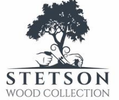FAQ's
How are the boards made?
Every board in our collection is crafted in our shop by myself. We use food-safe practices only. Food grade titebond glue is our adhesive. Every piece is soaked in food grade mineral oil and later coated with “Cutter Butter” which we make from a mixture of organic beeswax and food grade mineral oil.
What type of board should I buy?
There are four basic types of wooden boards available. Each one has its own characteristics and benefits. Different boards are suited for different purposes.#1- One Piece Board - These boards may be cut into various shapes. They are good for presenting food, slicing bread, and serving hors d'oeuvres. The benefit of these boards is the beauty of the grain uninterrupted by cutting and gluing. Shop our One Piece boards here.
#2- Glued-Up Flat Grain Board - These boards are great for presenting food and slicing bread. Because these boards are glued up from smaller strips of wood, they are much more stable than the one piece boards and resist warping and twisting. These types of boards allow for a variety of hardwoods to be mixed, enhancing and contrasting grains and colors in the board. Shop our Glued-Up Flat Grain boards here.
#3- Glued-Up Edge Grain Board (Butcher Block). These boards are suitable for more serious carving as edge grain is more durable than flat grain. Though these boards do not show highly figured wood except around the edges they are extremely strong and resist warping and twisting. Shop our Edge Grain boards here.
#4- End Grain - End Grain boards are the most durable and versatile of all. They are preferred by many chefs because of its versatility and kindness to cutlery. Knives stay much sharper because they don’t cut any fibers. The end grains are unique to each board and species of wood giving the artist the ability to combine grains and color variations into amazing patterns. They are perhaps best described as “quilting with wood”.
End grain boards are the most expensive of the four to create because of the many added machinings and gluing steps involved, however, these boards can be handed down for many generations if properly cared for. We offer our own Cutter Butter to give your boards a lifetime of care. Shop End Grain boards here.
How do I care for my boards?
1- Hand Wash- NEVER put your board in the dishwasher or leave in dishwater. Gently wash with hot water and a mild dish soap. Rinse thoroughly and wipe dry. Make sure air can flow all around to thoroughly dry.
2- Deodorizing- Lemon is a natural deodorizer. After cleaning, simply cut a fresh lemon in half, sprinkle a little salt on it, and rub the lemon all over the surface of the board (front and back).
3- Maintaining- When your board seems to have lost a bit of its luster, there is an easy solution. Apply a coating of mineral oil and let it soak in. Rub with a clean dry cloth. Repeat as necessary.
4- Cutter Butter- For an even better protection apply a board-wax such as our Cutter Butter. This will not only penetrate but will seal and protect the wood surface from absorbing liquids. Buy a jar of Cutter Butter here.
5- Long-Term Neglect- If you have a wooden board that has been handed down or one that has had little maintenance, don’t despair. We would be happy to send you directions to sand and restore. Don’t have time for that? Send us a picture and we will be glad to quote you a price on refurbishing your heirloom. Email: stetson.rosemary@gmail.com
What if I have a severely worn or mishandled board?
If you have a wooden board that has been handed down or one that has had little maintenance, don’t despair. We would be happy to send you directions to sand and restore. Don’t have time for that? Send us a picture and we will be glad to quote you a price on refurbishing your heirloom.
Email: stetson.rosemary@gmail.com
